As an Amazon Associate I earn from qualifying purchases.
This is a recipe for the hearty Scottish stew powsowdie, traditionally made with a sheep’s or deer’s head, but which works well with other cuts of meat. I used various venison cuts.
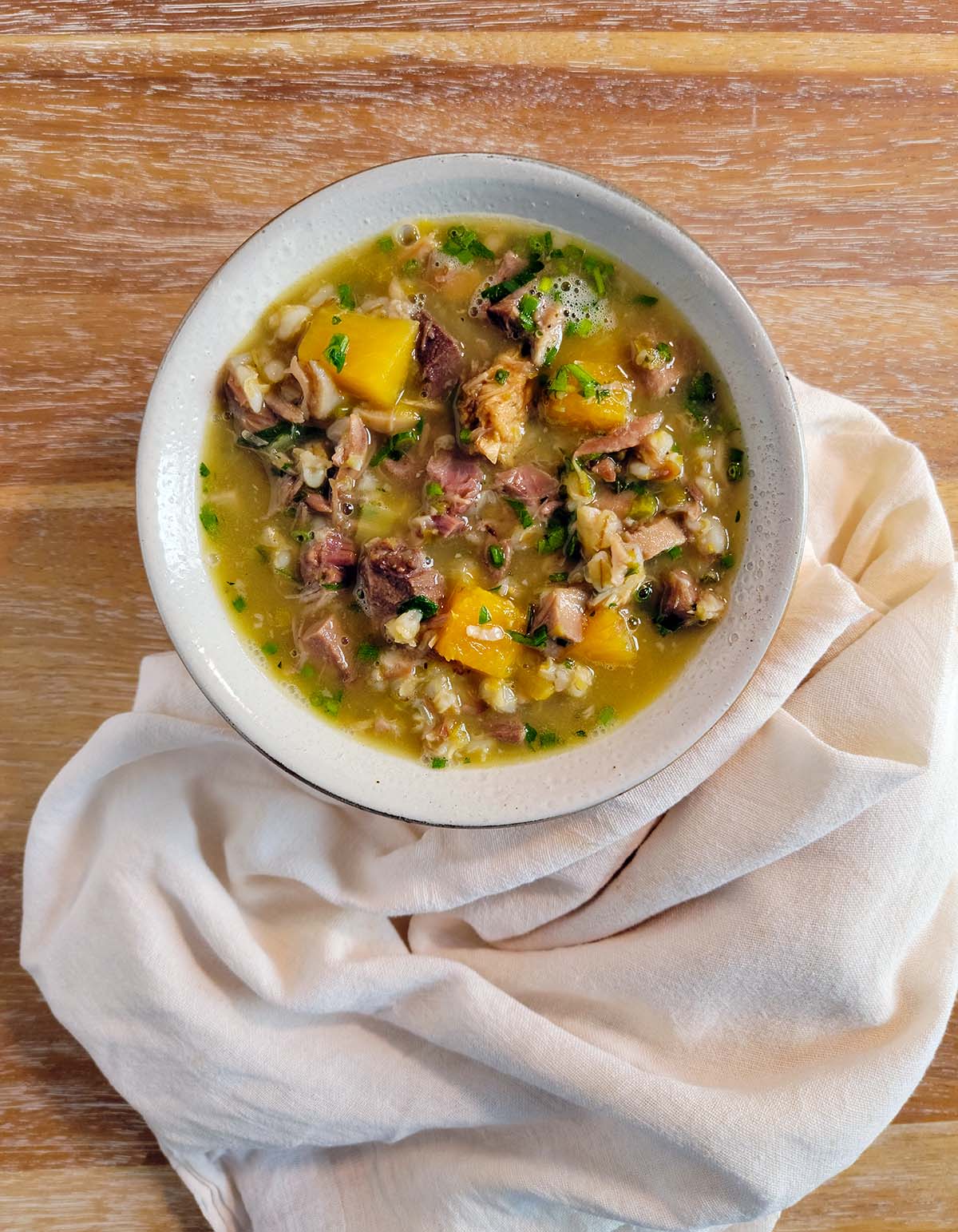
Powsowdie is a centuries-old dish, a stew for the poor and middle class that uses humble ingredients, most notably a sheep’s head. Yes, an actual sheep’s head. You can of course make this with a real sheep’s head, which you will most likely find in a halal market in the United States.
Or, if you live in a place without Chronic Wasting Disease, definitely make this a deer head stew and use the skinned-out head of a doe or button buck.
Or, do what I did and use bits that mimic a whole head: deer or lamb shanks, a couple deer or lamb tongues and a pair of hog trotters. This mix includes meat you’d get in the traditional dish, plus the addition of sticky, gelatin-rich trotters, which you can get in most butcher shops, Asian or Latin markets.
Use odd bits if you can because powsowdie is a celebration of no waste, of using bits and bobbles and odds and ends to make something beautiful. And this stew is, despite all odds, beautiful.
If you have none of all this, use something like lamb or deer shoulder, or neck, or something with lots of connective tissue, plus, if you want it thick and lovely, maybe a teaspoon or two of Knox gelatin.
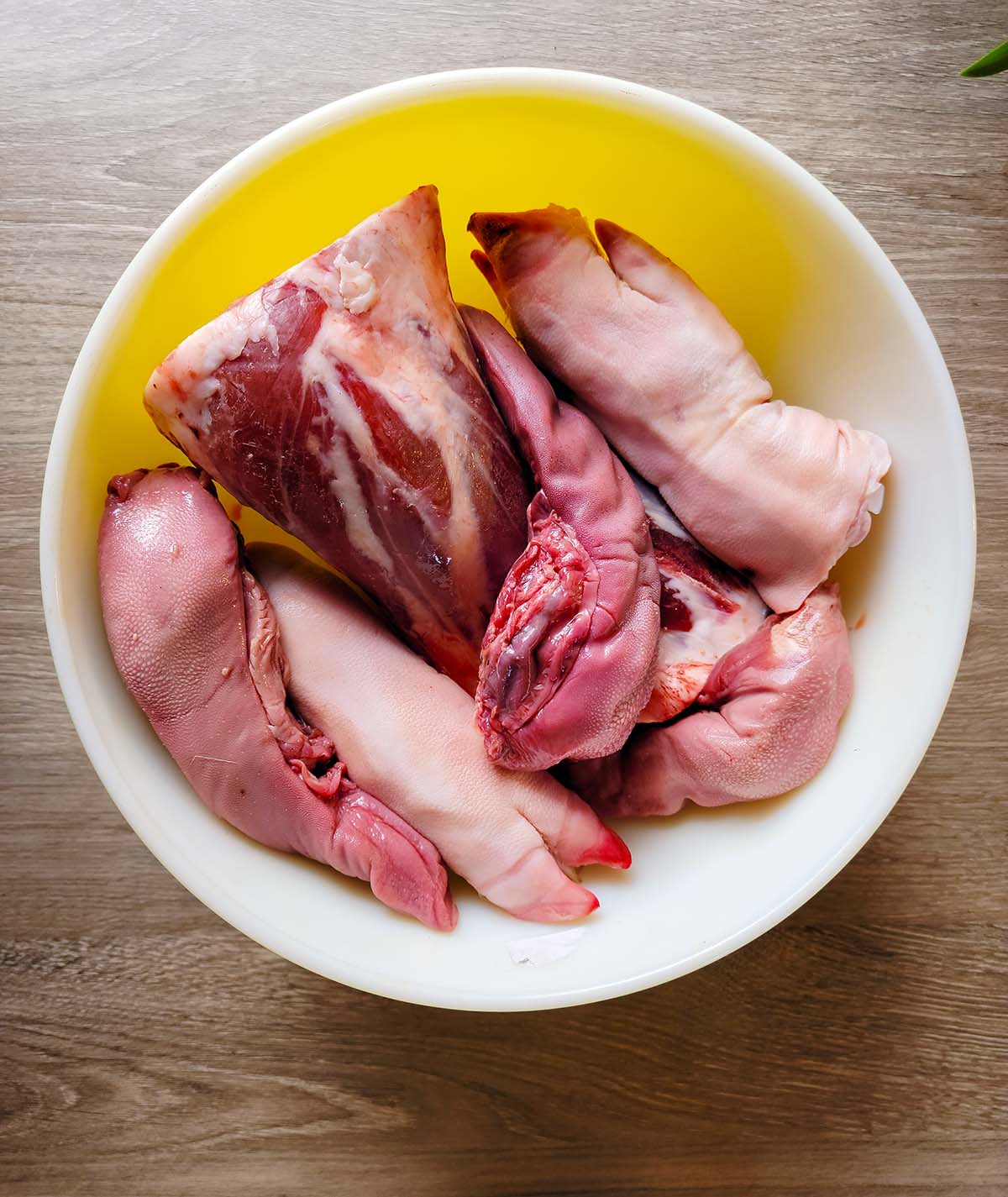
Reading through various recipes for powsowdie — mine is mostly inspired by a recipe in Ben Mervis’ excellent The British Cookbook — there are two striking things about this stew:
- First, there’s no browning. Everything is all cooked slow and gentle. And there’s an added scald and clean step very common in Asian cooking, but relatively rare in Europe. More on that below.
- Second, the use of dry split green peas right at the beginning. The peas completely dissolve and further thicken the powsowdie. Barley, which is eaten as a grain element in the stew, comes later.
Add to this humble things like rutabagas, leeks, celery, carrot if you want it, barley and parsley and you have something so simple you’ll wonder what makes it so good.
The answer is time.
Powsowdie is a weekend or day-off stew, as it’s best cooked very slowly over the course of a day. You’ll also need to do things like debone and mince the trotters if you are using them, pick meat off a head if using that, shred meat off a shank, or peel skin off a tongue.
Such is the gnarly price of turning bits people throw away into wonderment.
Serve powsowdie with bannocks or rye bread, or any sturdy loaf, some dark, malty beer or red wine and cozy up on a dark winter’s day knowing you cooked, really cooked, and made something satisfying out of practically nothing.

Other British Recipes
Here are a few other of my favorite Scottish or generally British dishes that would work well with a nice bowl of powsowdie.
- Mince and Tatties. Maybe the national dish of Scotland.
- Venison mincemeat pies, a British winter favorite that yes, actually has meat in it.
- Lancashire hotpot, a simple dish of meat and potatoes.
- Venison shepherd’s pie, which should rightly be called huntsman’s pie, but hey…
If you liked this recipe, please leave a ⭐️⭐️⭐️⭐️⭐️ rating and a comment below; I’d love to hear how everything went. If you’re on Instagram, share a picture and tag me at huntgathercook.
Scottish Powsowdie
Ingredients
- 1 pound lamb or deer tongues (see below for alternates)
- 2 lamb or deer shanks
- 2 pig's trotters
- Salt
- 1/2 cup dry green peas
- 1 rutabaga, peeled and cut into chunks
- 1/2 pound barley
- 2 leeks, white and light green parts, sliced thin
- 2 stalks celery, chopped
- 1/2 cup chopped parsley
- Black pepper to taste
Instructions
- Put all the meats in a large pot, bring this to a boil and let it cook for a minute or two. Pour off the water and discard, rinse the meats under cole water and clean the pot. This process "cleans" the meats and will limit the froth that forms on the actual broth.
- Put the meats back in the pot and cover with water by about 2 or 3 inches. Bring to a simmer and skim any froth. Pour in the dry green peas. Add a tablespoon or two of salt and let this simmer gently until everything is really tender, which will be about 3 to 4 hours.
- Remove all the meats carefully. Let them cool on a baking sheet for a bit. If you are using tongues, you will need to peel the skin off them while they're still warm. If you have trouble, use a paring knife. Discard all the bones from the trotters (there are many) and the shanks. Roughly shred the shank meat and finely mince the various bits of trotter. Cut the tongues into chunks.
- Put all this back in the pot and add the barley, rutabaga, leeks and celery. Let all this simmer until the barley and rutabaga are tender, about 40 minutes. Adjust the seasonings with salt and black pepper and add the parsley. Serve with bread and beer.
Notes
Nutrition
Nutrition information is automatically calculated, so should only be used as an approximation.
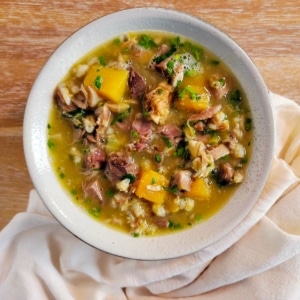
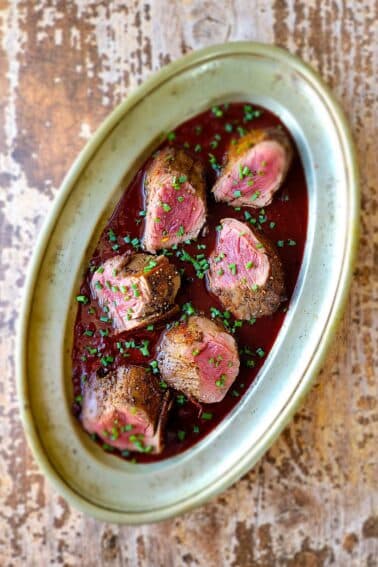
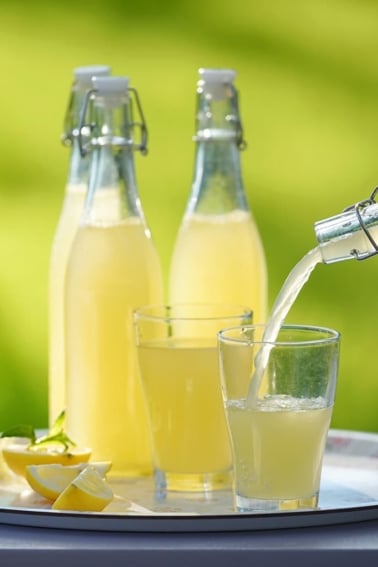


I made this recipe yesterday for my wife and I. Two deer shanks and neck roast was used (from a deer that was CWD negative). It was interesting to see how the peas acted as a thickener. Then, everything went into the pot (I added a few shredded carrots) and simmered for an hour before turning it off. Between the peas and the barley, this thickened into a hearty stew that I served with cornbread. My wife loved it and we have enough for two weeks!
I can’t say for sure but, I would hope that my great, great grandmother McDougal, who immigrated to the US via Canada, would have loved a bowl of it on her journey to her new country.
So I actually have both a Sheep head and a goat head in my freezer. My farmer friend gave them to me because I’m the one who buys all her off cuts. I’ve never quite figured out what to do with them but this recipe seems like a good opportunity. Any advise on cooking and using one or both heads?
Ian: Depends on the size I guess. I think one sheep’s head would be enough.
Thanks Hank. I think I meant more like advice on cooking an entire head. I’m not usually intimidated by strange ingredients but I kind of am here. I was thinking just simmer it until the meat is tender, maybe an hour, and then pick off whatever looks edible. I’ve done fish heads before but that’s a different beast. lol
I cooked a sheep’s head once and it stank the house up, even though I filled the pot with lemons.. had to skim a lot of froth too.. like a never ending amount.. I’m not a pro as I only did it once, but I gotta say the meat behind the eye is the absolute best, and the cheeks are great too. The stew was hearty and definitely good and edible but not worth the stink in my opinion..so maybe I missed some steps.. In retrospect maybe I should have first “cleaned” it w a light boil to remove the froth, then roasted it, and then stewed it.., maybe that might have prevented all the stink?! I dunno.
This recipe reminds me of something my immigrant German grandmother would make back in 50’s. I never really knew what went in the stew and now I know why she never told me.
As soon as I read the name, I thought of Mexican Pozole. Very interesting! Thanks for another great recipe.
This looks like a tasty and nourishing recipe that could fuel the energy needs of a pipe band. Sending this page to our pipe band. Thank you!
I will definitely be trying this with the head of the next deer that I butcher (barring a big, well antlered buck of course).
Hm, Grandma Croft had a recipe she called Scottish stewpot that was a lot like this. (Grandma Croft cooked for a bunch of farmhands so her recipes were always large.) Basicly, she brought to a boil in her large canning kettle all the fresh scrap meat she could find, including one or two venison or sheep heads (Always cut in half with the eyes removed), all kinds of shanks, damaged pig’s trotters she didn’t want to pickle, ect, After a few minutes cooking she drained the water off the meat and rinsed it in cold water. Then she moved everything back to the canning kettle and cooked the meat over low heat with a handful of peppercorns for three to four hours. The meat came back out then and was stripped off the bone with any tongues being peeled. The meat was then diced and returned to the strained broth with carrots, rutabaga, celery, small onions and/or leeks, barley (she used a box of pearl barley in this), and a generous handful of salt. This was cooked at a slow simmer for an hour or until the vegetables were cooked through. She always served it in big bowls with her marbled rye bread. It certainly looks like Powsowdie was where her Scottish stewpot started.